
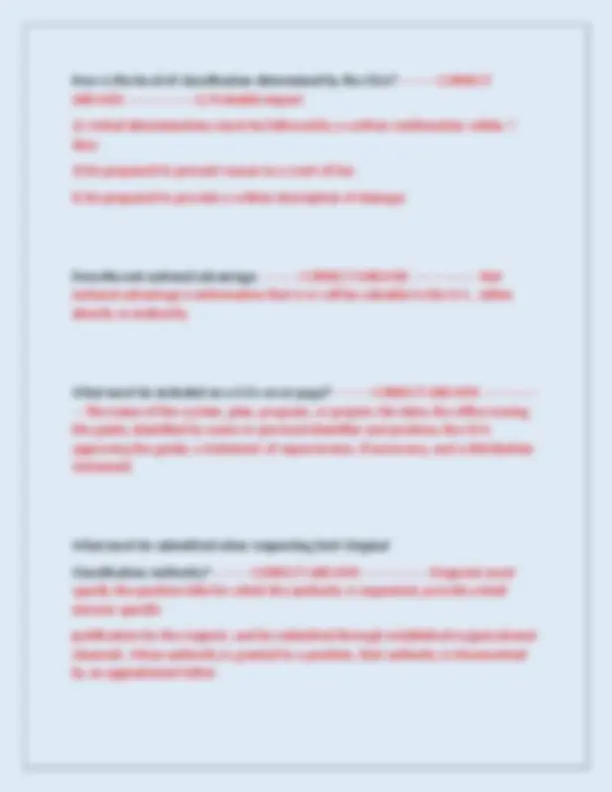
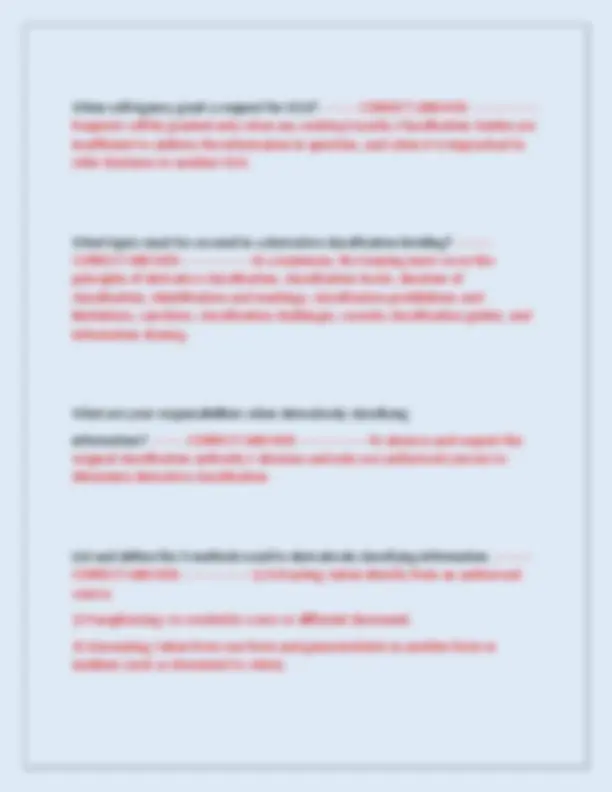
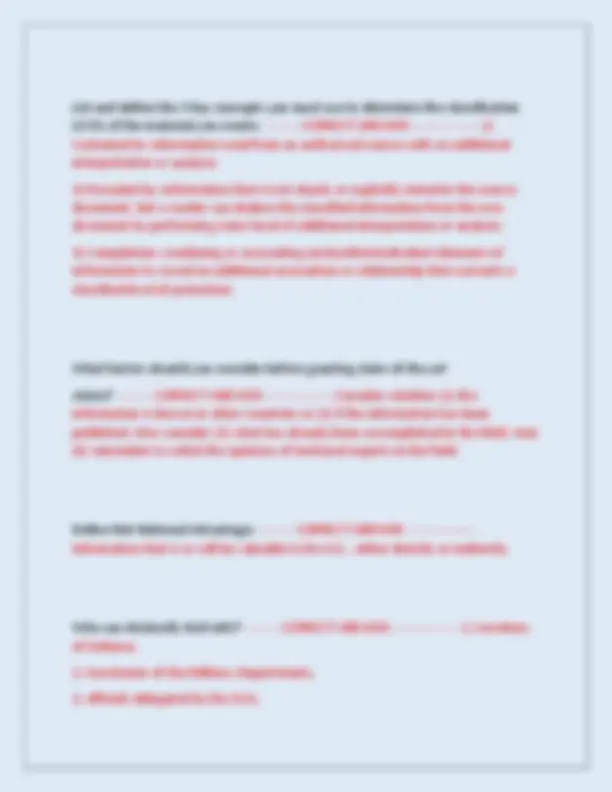
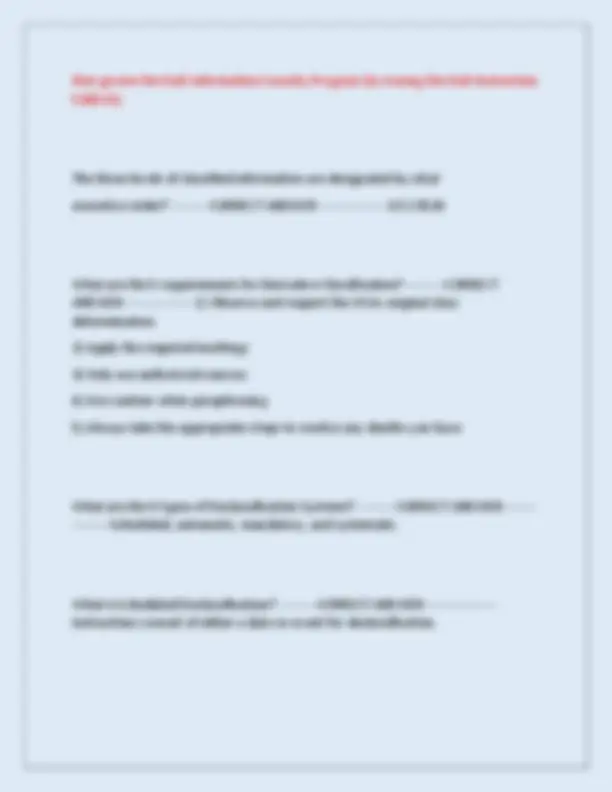
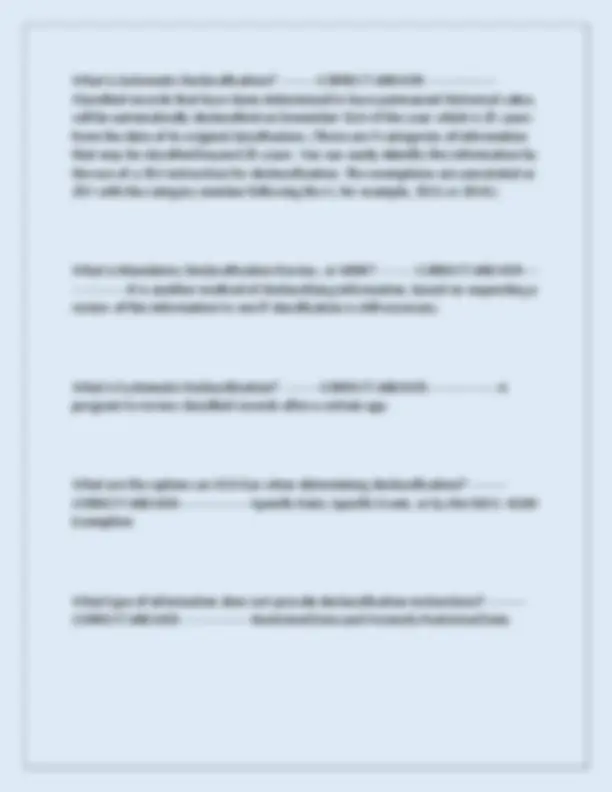
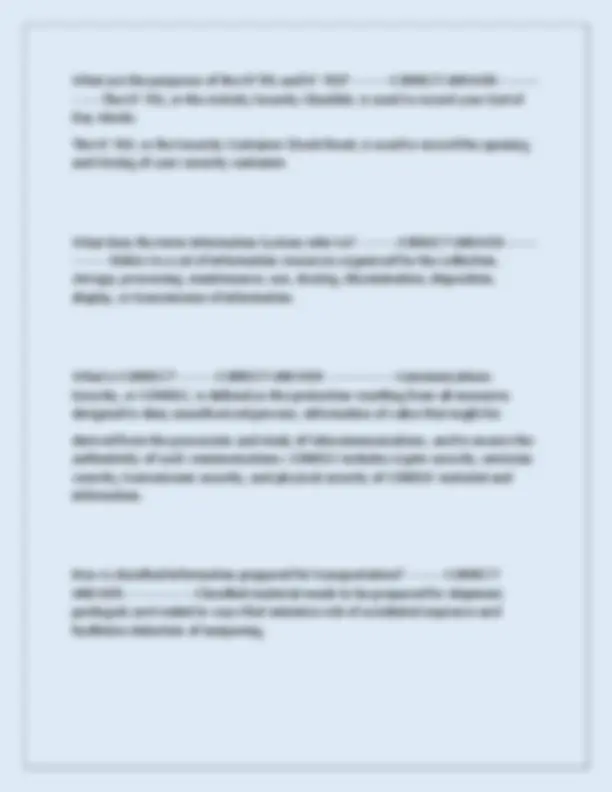
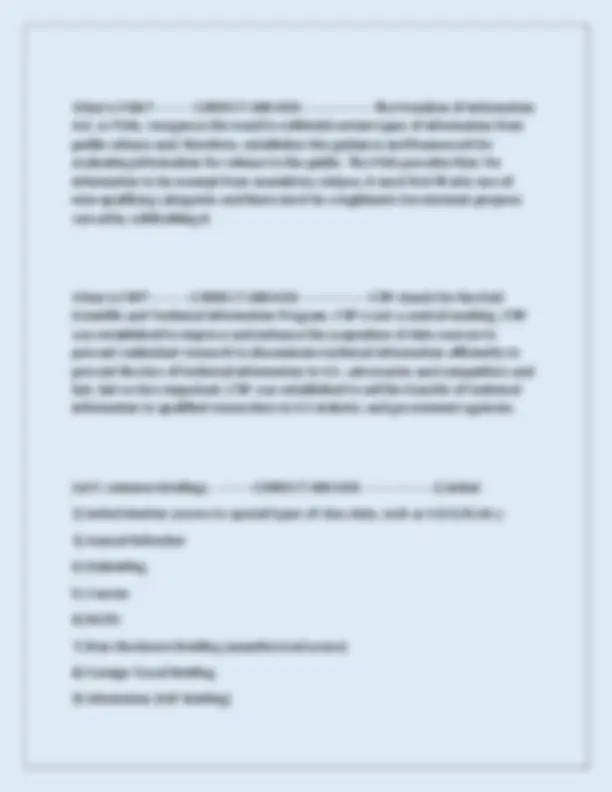
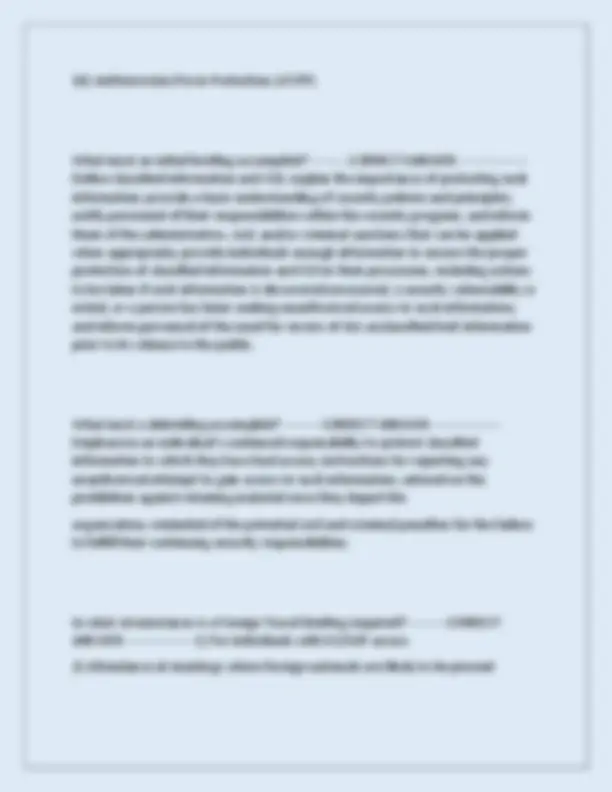
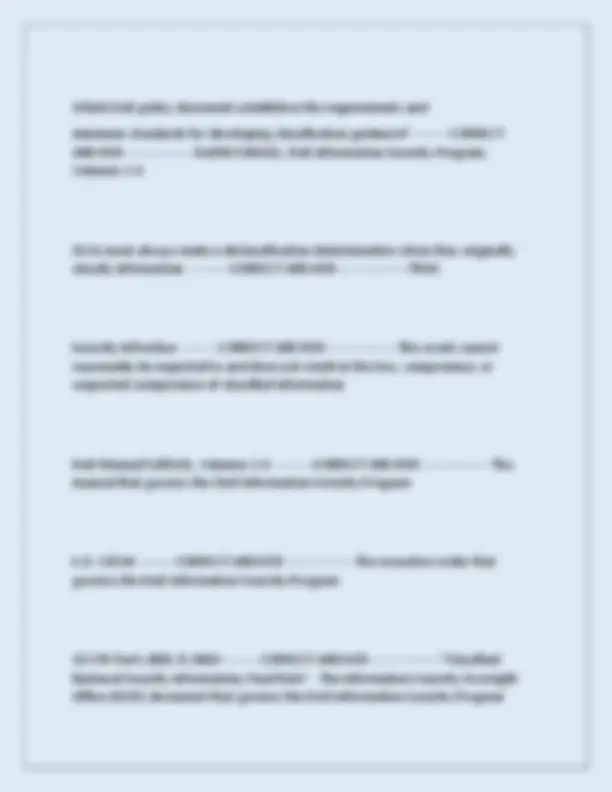
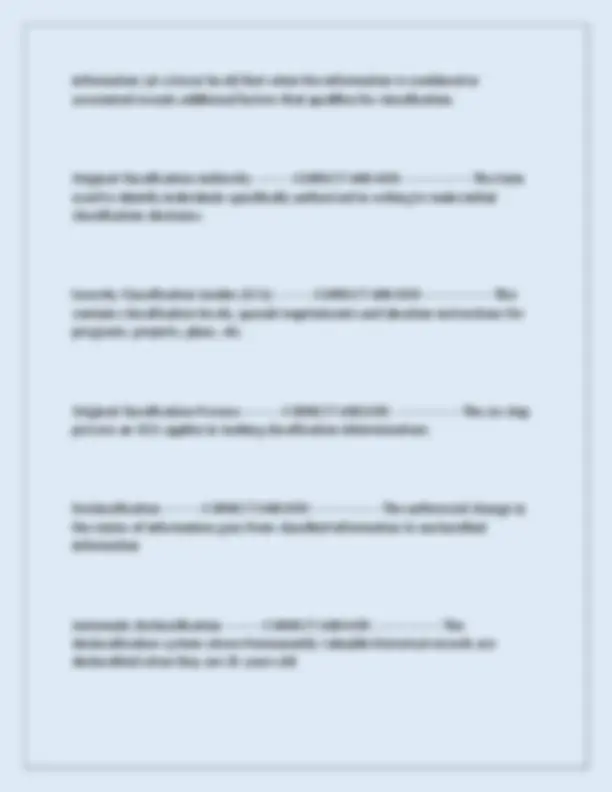
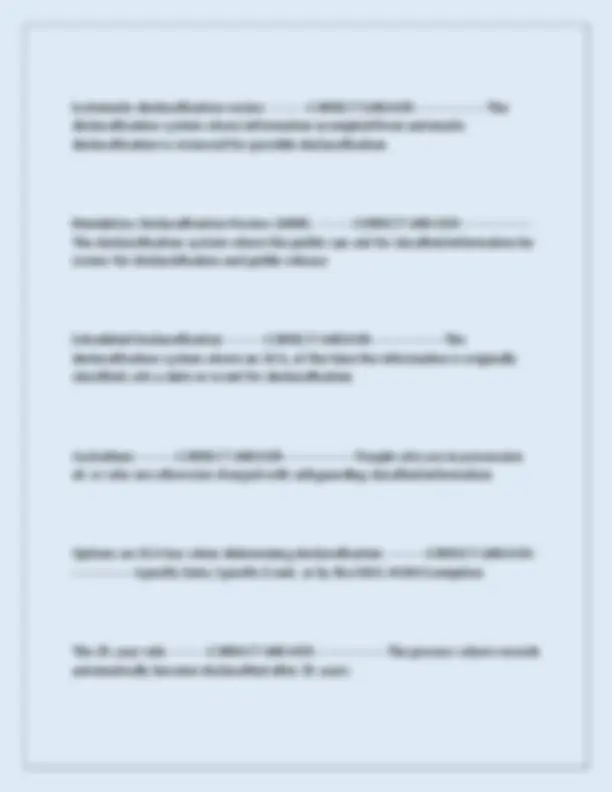
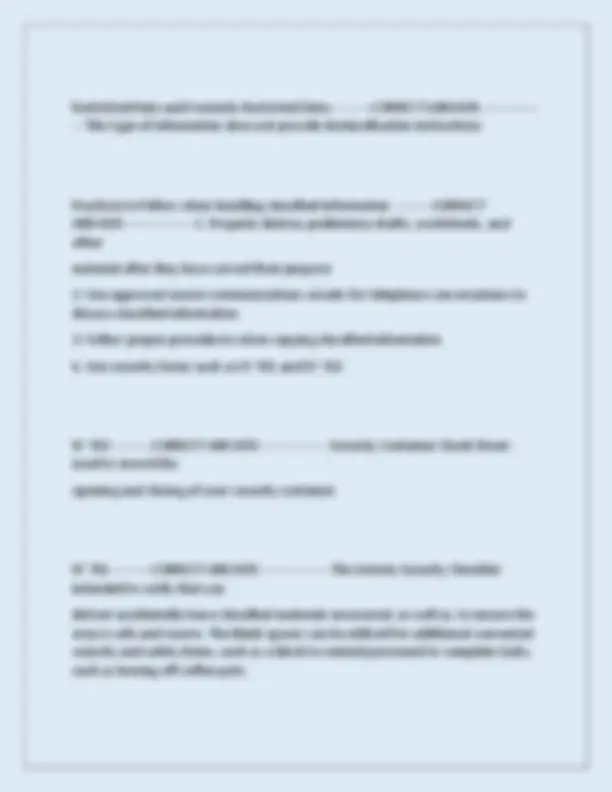
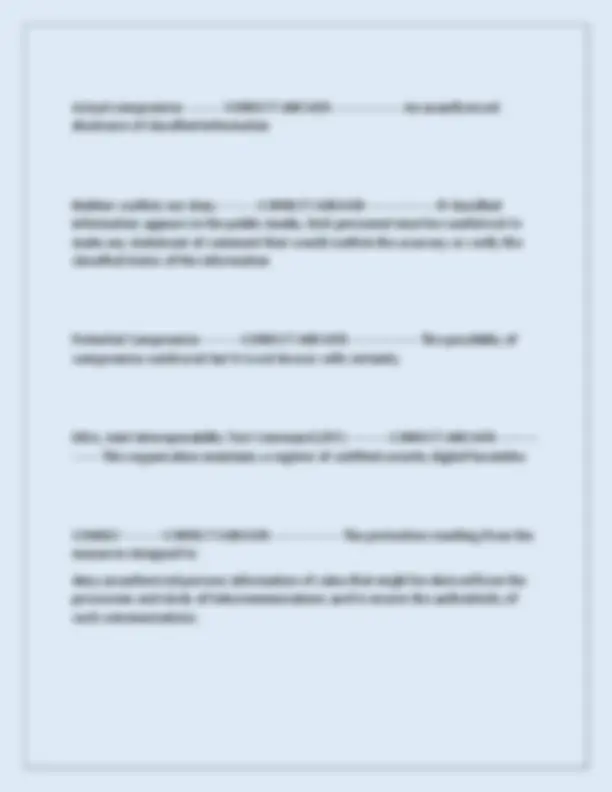

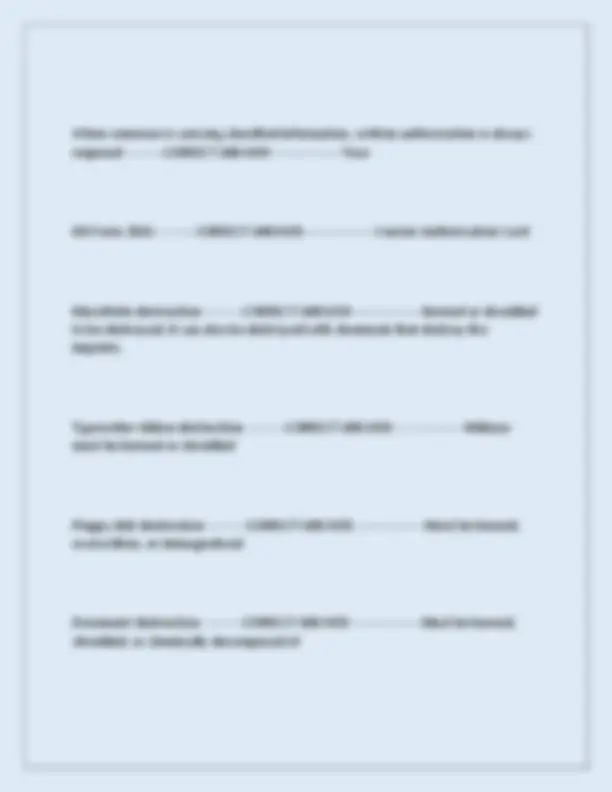
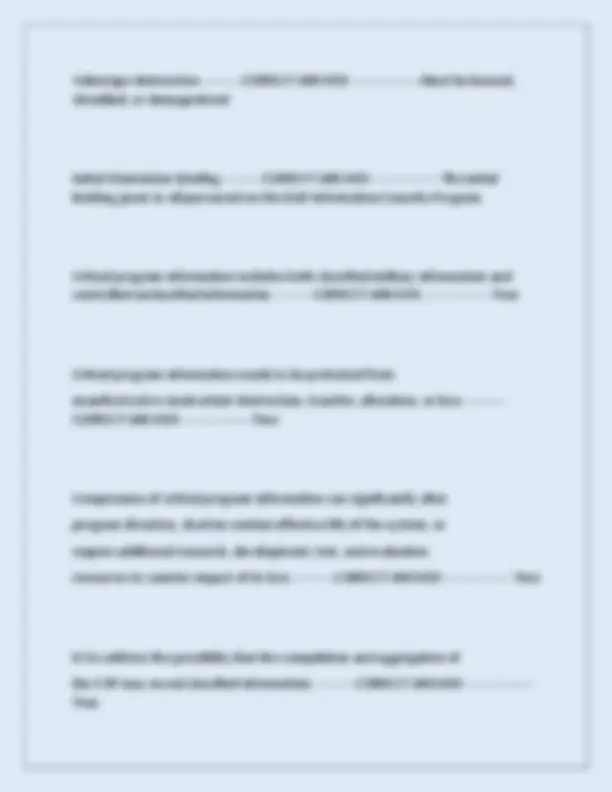


Study with the several resources on Docsity

Earn points by helping other students or get them with a premium plan


Prepare for your exams
Study with the several resources on Docsity

Earn points to download
Earn points by helping other students or get them with a premium plan
Community
Ask the community for help and clear up your study doubts
Discover the best universities in your country according to Docsity users
Free resources
Download our free guides on studying techniques, anxiety management strategies, and thesis advice from Docsity tutors
The SFPC Exam 2025 is an essential certification for individuals seeking to validate their proficiency in Security Fundamentals. This exam guide provides students with comprehensive coverage of all questions and verified answers to help candidates achieve top grades. The document is meticulously designed to reflect the latest version of the exam, ensuring relevance and accuracy. It serves as a crucial resource for understanding the key policies and procedures related to national security information. One of the focal points is the guidance provided by the ISOO 32 CFR Parts 2001 and 2003, which outlines the classification, downgrading, declassification, and safeguarding of classified national security information. Additionally, the Executive Order 13526 is highlighted for its role in standardizing the classification and declassification process.
Typology: Exams
1 / 24

This page cannot be seen from the preview
Don't miss anything!

















Which policy document provides guidance to all government agencies on classification, downgrading, declassification, and safeguarding of classified national security information? ---------CORRECT ANSWER-----------------ISOO 32 CFR Parts 2001 and 2003, Classified National Security Information; Final Rule Which policy document prescribes a uniform system for classifying, safeguarding, and declassifying national security information? ---------CORRECT ANSWER-----------------E.O. 13526, Classified National Security Information What are the 6 steps for an OCA to classify information? ---------CORRECT ANSWER-----------------1) Confirm the info is owned/controlled by the Gov
When will Agency grant a request for OCA? ---------CORRECT ANSWER----------------- Requests will be granted only when any existing Security Classification Guides are insufficient to address the information in question, and when it is impractical to refer decisions to another OCA. What topics must be covered in a derivative classification briefing? --------- CORRECT ANSWER-----------------At a minimum, the training must cover the principles of derivative classification, classification levels, duration of classification, identification and markings, classification prohibitions and limitations, sanctions, classification challenges, security classification guides, and information sharing. What are your responsibilities when derivatively classifying information? ---------CORRECT ANSWER-----------------To observe and respect the original classification authority's decision and only use authorized sources to determine derivative classification. List and define the 3 methods used to derivatively classifying information. --------- CORRECT ANSWER-----------------1) Extracting: taken directly from an authorized source.
List and define the 3 key concepts you must use to determine the classification LEVEL of the material you create. ---------CORRECT ANSWER-----------------1) Contained In: information used from an authorized source with no additional interpretation or analysis.
jurisdiction. ---------CORRECT ANSWER-----------------TRUE. They are assigned a specific realm in which they are qualified to make original classification decisions. What must an OCA be trained in? ---------CORRECT ANSWER-----------------OCA responsibilities, classification principles, to include avoidance of over- classification, proper safeguarding of classified information, and the criminal, civil, and administrative penalties for failing to protect classified information from unauthorized disclosure. What is the responsibility of the Information Security Oversight Office, or ISOO? ---------CORRECT ANSWER-----------------To oversee and manage the information security program, under the guidance of the National Security Council, or NSC. What is the responsibility of the National Security Council, or NSC? --------- CORRECT ANSWER-----------------To provide the overall policy direction for the Information Security Program. It assists the President in developing and issuing National Security Policies, and it guides and directs the implementation and application of the Executive Order. The NSC exercises its guidance primarily through the ISOO. What is the USD(I) and their responsibility? ---------CORRECT ANSWER----------------- The Under Secretary of Defense for Intelligence has the primary responsibility for providing guidance, oversight, and approval authority of policies and procedures
that govern the DoD Information Security Program (by issuing the DoD Instruction 5200.01) The three levels of classified information are designated by what executive order? ---------CORRECT ANSWER-----------------EO 13526 What are the 5 requirements for Derivative Classification? ---------CORRECT ANSWER-----------------1) Observe and respect the OCAs original class determination.
What are the purposes of the SF701 and SF 702? ---------CORRECT ANSWER---------- -------The SF 701, or the Activity Security Checklist, is used to record your End of Day checks. The SF 702, or the Security Container Check Sheet, is used to record the opening and closing of your security container. What does the term Information System refer to? ---------CORRECT ANSWER-------- ---------Refers to a set of information resources organized for the collection, storage, processing, maintenance, use, sharing, dissemination, disposition, display, or transmission of information. What is COMSEC? ---------CORRECT ANSWER-----------------Communications Security, or COMSEC, is defined as the protection resulting from all measures designed to deny unauthorized persons, information of value that might be derived from the possession and study of telecommunications, and to ensure the authenticity of such communications. COMSEC includes crypto security, emission security, transmission security, and physical security of COMSEC material and information. How is classified information prepared for transportation? ---------CORRECT ANSWER-----------------Classified material needs to be prepared for shipment, packaged, and sealed in ways that minimize risk of accidental exposure and facilitates detection of tampering.
Requirements to Hand Carry classified information ---------CORRECT ANSWER------- ----------1) Should only be done as a last resort
What is FOIA? ---------CORRECT ANSWER-----------------The Freedom of Information Act, or FOIA, recognizes the need to withhold certain types of information from public release and, therefore, establishes the guidance and framework for evaluating information for release to the public. The FOIA provides that, for information to be exempt from mandatory release, it must first fit into one of nine qualifying categories and there must be a legitimate Government purpose served by withholding it. What is STIP? ---------CORRECT ANSWER-----------------STIP stands for the DoD Scientific and Technical Information Program. STIP is not a control marking. STIP was established to improve and enhance the acquisition of data sources to prevent redundant research to disseminate technical information efficiently to prevent the loss of technical information to U.S. adversaries and competitors and last, but no less important, STIP was established to aid the transfer of technical information to qualified researchers in U.S industry and government agencies. List 5 common briefings. ---------CORRECT ANSWER-----------------1) Initial
Security Violation ---------CORRECT ANSWER-----------------An event that results in or could be expected to result in the loss or compromise of classified information Unauthorized Disclosure ---------CORRECT ANSWER-----------------Communication or physical transfer of classified or controlled unclassified information to an unauthorized recipient Termination Briefing ---------CORRECT ANSWER-----------------This briefing is given when an individual's employment is terminated, clearance eligibility is withdrawn, or if the individual will be absent from duty for 60 days or more. It is also given to those who have been inadvertently exposed to classified information. Foreign Travel Briefing ---------CORRECT ANSWER-----------------This briefing that applies to cleared personnel who plan to travel in or through foreign countries, or attend meetings attended by representatives of other countries. Refresher Briefing ---------CORRECT ANSWER-----------------This briefing is presented annually to personnel who have access to classified information or assignment to sensitive duties.
Secret ---------CORRECT ANSWER-----------------Unauthorized disclosure of this information could reasonably be expected to cause serious damage to our national security. Top Secret ---------CORRECT ANSWER-----------------Unauthorized disclosure of this information could reasonably be expected to cause exceptionally grave damage to our national security. Confidential ---------CORRECT ANSWER-----------------Unauthorized disclosure of this information could reasonably be expected to cause damage to our national security. Derivative Classification ---------CORRECT ANSWER-----------------This is defined as the incorporating, paraphrasing, restating, or generating in new form any information that is already classified. Original Classification ---------CORRECT ANSWER-----------------This is defined as an initial determination that information requires, in the interest of national security, protection against unauthorized disclosure. Compilation ---------CORRECT ANSWER-----------------This is defined as unclassified information or classified
Systematic declassification review ---------CORRECT ANSWER-----------------The declassification system where information exempted from automatic declassification is reviewed for possible declassification Mandatory Declassification Review (MDR) ---------CORRECT ANSWER----------------- The declassification system where the public can ask for classified information be review for declassification and public release Scheduled Declassification ---------CORRECT ANSWER-----------------The declassification system where an OCA, at the time the information is originally classified, sets a date or event for declassification Custodians ---------CORRECT ANSWER-----------------People who are in possession of, or who are otherwise charged with safeguarding classified information Options an OCA has when determining declassification ---------CORRECT ANSWER-- ---------------Specific Date, Specific Event, or by the 50X1-HUM Exemption The 25-year rule ---------CORRECT ANSWER-----------------The process where records automatically become declassified after 25 years
Restricted Data and Formerly Restricted Data ---------CORRECT ANSWER-------------- ---This type of information does not provide declassification instructions Practices to follow when handling classified information ---------CORRECT ANSWER-----------------1. Properly destroy preliminary drafts, worksheets, and other material after they have served their purpose